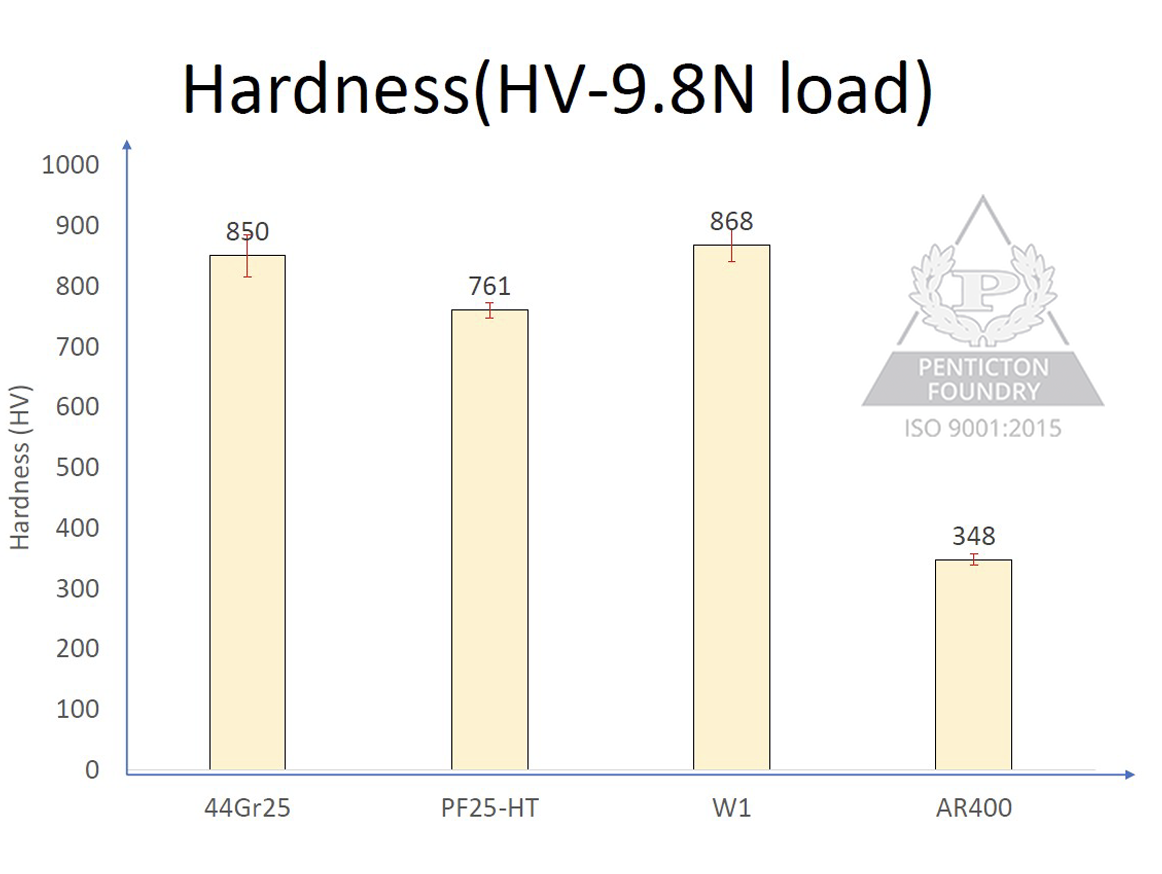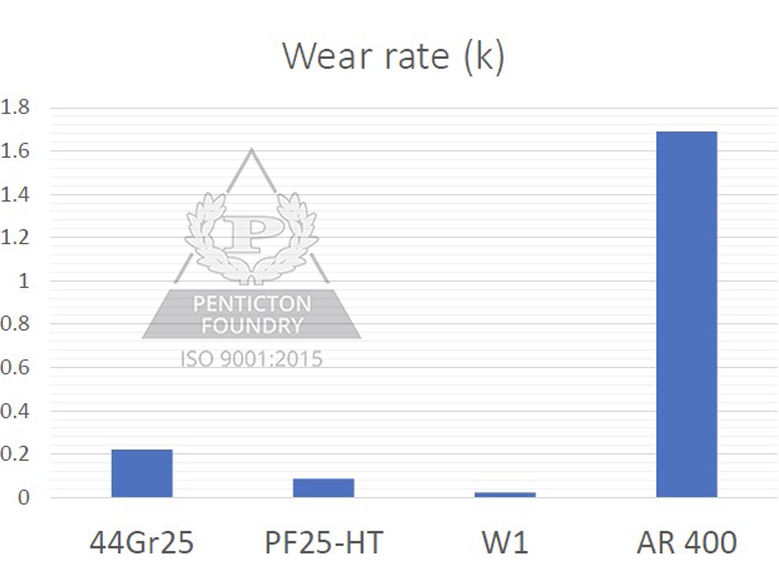Experiment Comparing ASTM A532 and AR400 Plate
on April 29, 2025
High Chrome White Iron and AR400 Plate
High chrome white iron is a common grade of iron used in applications that experience high wear. Its combination of carbides and martensite differentiate it from other wear solutions such as AR400 plate. Specifically, the high chrome white iron alloys have a microstructure that contain approximately 30% carbides in a martensitic matrix. Carbides are 4 times harder than martensite. This creates a very hard material with a typical hardness range between 600 BHN and 720 BHN (depending on the material chemistry). Industries such as mining, oil and gas, hydraulic fracturing, pumping and agriculture will often use high chromium iron in abrasion resistant applications.
Why We Did the Experiment
Throughout the years of pouring chrome white iron in the ASTM A532 standard, we had received feedback from customers that the wear resistance of their castings and parts was significantly decreasing their downtime.
Read: This chute liner success story was the catalyst for our experiment.
We decided to test our most commonly poured alloys - GR25 (Granite 25) PF25 (Pliant 25) and W1 (Class 2 Type D) - against AR400, (a competitive product), in order to quantify differences in wear resistance.
Note: GR25 and PF25 are both ASTM A532 Class III Type A alloys, and W1 is ASTM A532 Class II Type D.
The Experiment
Multiple lab tests were performed on GR25, PF25 and W1 to characterize, and better understand, how these materials would work in different applications. This report focuses on the scratch wear test, and compares the wear resistance of Penticton Foundry’s common alloys to AR400 plate. The test was done in a lab using controlled testing conditions. The intention was to compare the weight loss of the test material after performing a scratch test for a controlled amount of time.
The sample hardness was recorded before the test, and the weight loss was recorded at the end of the test.
Results
The following chart and graphs show results of the hardness and wear rate.
- See chart 1. The wear results comparing high chrome white iron (HWCI) to AR400 shows that the HCWI samples have an improved wear resistance to AR400 samples - the lower the number in the wear rate column, the better.
- The weight loss differences between the Penticton Foundry alloys did not correlate perfectly with the hardness. This was unexpected as Granite 25 (G25) has a higher hardness and carbide percentage, and so it should be closer to the W1 testing. We plan to do confirmation testing to determine if this is a clerical error or not.
Chart 1
| Material | Hardness Vickers | Hardness Brinell (BHN) | Wear Rate (K) |
|---|---|---|---|
| Gr25 | 850 | 641 | 0.22e-4 |
| PF25 | 761 | 610 | 0.0877e-4 |
| W1 | 868 | 653 | 0.022e-4 |
| AR400 | 348 | 345 | 1.69e-4 |


Limitations of the Experiment
In this experiment high chrome white irons performed much better than AR400 against gouging wear. We plan, however, to do more testing to confirm/increase the accuracy of our results.
Applications for High Chromium Alloys
GR25 – Piping, impellers, crusher liners and other mine liners.
Resource: To learn more about different mill liners and the specific alloys recommended, read “Different Mill Liners and Alloys to Use”.
PF25 – This alloy is used in applications where machining is required. This material has a lower carbide ratio, which can be softened to machine and then re-harden to the final hardness. It is used for pump castings or hydraulic fracturing castings.
W1- ASTM A532 Class II Type D alloy is used typically in mining chute liners that experience impact as well as sliding wear. These alloys have a lower carbide ratio than the Class III Type A alloys, and so they can be considered tougher.
Read: To learn more about chrome white iron, ASTM A532, check out our chrome white iron webpage.

